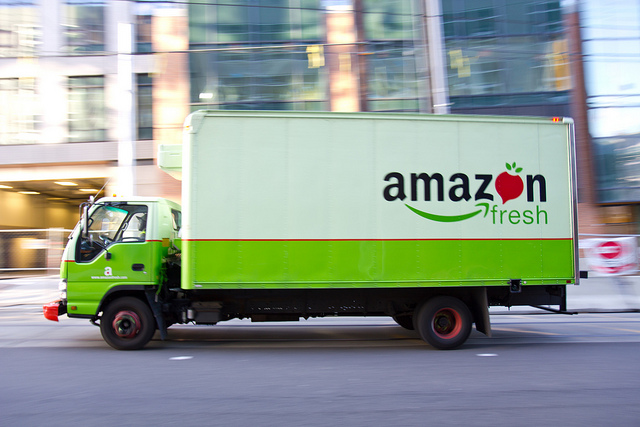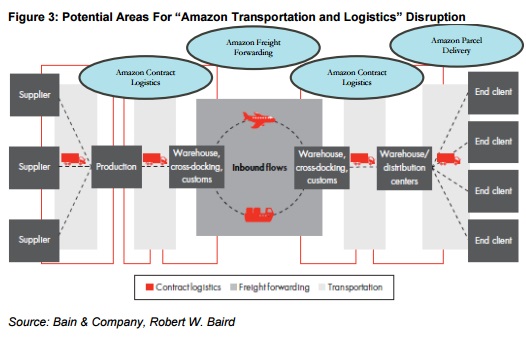
by Fronetics | Feb 10, 2016 | Blog, Content Marketing, Marketing, Strategy
A good call to action will help potential leads feel compelled to choose your offer over your competitors’ offers.
 If you feel your marketing campaign falls short in generating quality leads, you are not alone. Typically one in 10 marketing professionals questions the effectiveness of their lead generation methods. While you may have some of the components of a strong campaign in place, it is possible that you are leaving out a very important ingredient for success: a call to action (CTA).
If you feel your marketing campaign falls short in generating quality leads, you are not alone. Typically one in 10 marketing professionals questions the effectiveness of their lead generation methods. While you may have some of the components of a strong campaign in place, it is possible that you are leaving out a very important ingredient for success: a call to action (CTA).
CTAs are vital in any tactical marketing campaign. This is where you actually ask for your potential customer or client to take some form of action that moves them one step closer to your objective: connecting them to your company.
Say that you offer potential customers a high-value offer — like an ebook, whitepaper, free consultation, or discount — as a lead nurturing tactic. If you do not include an actual call to action, the customers have no direction for obtaining the offer, and you are probably missing out on a myriad of quality leads.
What makes a good call to action?
Not all CTAs are created equal. You are competing with every other brand in a fight for the attention (and choice) of consumers, so it’s critical that prospects feel compelled to choose your offer over your competitors’.
- Calls to action are the secret sauce to driving people to your offers. If your CTAs aren’t effective at capturing people’s attention and persuading them to the click, then no matter how impressive your offer is, it is rendered useless.
- Typically, a good call to action can be used on product pages (non-landing pages), in display ads, email, social media, direct mail, and pretty much anywhere you can market your offer.
There are several tricks of the trade to creating a highly productive CTA:
Location, location, location
Just like with important news, the placement of your call to action should be “above the fold,” or, high enough on the page so the reader will not have to scroll to see it. It is also good to have a second CTA located further down within the offer.
Clarity is key
Do not try to be so clever with your words that your offer gets lost in translation. State the offer very clearly and be specific. Don’t just say “download now,” but rather, “Download you free e-book.”
Make the CTA stand out
Choose contrasting colors for your call to action so that it draws the attention of the eye and does not blend in on the page.
Link to a landing page
Send potential customers to a targeted landing page that is relevant to what they are looking for. Your call to action should send them to a page that will convert them into a lead. Landing pages are one of the most important elements of lead generation. In fact, according to MarketingSherpa’s research, landing pages are effective for 94% of B2B and B2C companies.
There are many innovative methods to increasing the number of quality leads a marketing plan generates. The trick is in knowing how. For more proven tips, download The 30 Greatest Tips & Tricks That Will Change The Way You Nurture Leads to learn the best ways to improve the productivity of your marketing strategies.
Download guide
Related articles:

by Fronetics | Feb 9, 2016 | Blog, Content Marketing, Leadership, Marketing, Strategy

Identifying content spokespeople outside of executive management can improve the product and alleviate C-suite stress.
Often people think they’re the only ones who can do their job or, at the very least, that they’re the ones who have been doing it and know it best. And some C-suite executives forget the people working around them — when, in fact, those are the very employees who could help them do their jobs better.
Joe Fuld, president of political and advocacy advertising agency The Campaign Workshop in Washington, D.C., has wise words on the subject: “As a business owner, I like to think that the business has a lot to do with me, but I have realized it has just as much to do with the people who work with me.”
Months ago I asked an account manager to be on a call with me to discuss an editorial calendar with a client. She was new to the account, so I thought it would be beneficial for her to listen in. A half-hour into the call, I saw her notepad with at least 20 new ideas for articles, white papers, and blog posts. By the end of the meeting, the list had grown to 40, and they weren’t just simple ideas — they were complex, thoughtful, and fresh. This wasn’t her role, but she dove in and helped to create the strongest editorial calendar to date. The client was pleased; I was thrilled.
The same experience can be true for a management team Strategically identified content spokespeople assisting senior management could help alleviate some of the stress C-suite executives face — and add new ideas to the pot.
Senior management are often extremely busy and may not be hearing the breadth of information and news that some of the lower-level professionals are exposed to. It’s true that too many cooks in the kitchen can spoil the meal, but, if chosen strategically, employees acting as content spokespeople could make your life easier and make the product better. Their investment and loyalty could also grow immensely.
John Hall, CEO of Influence & Co, writes about the subject in the Harvard Business Review. Here are his two suggestions on how to find the right people to fill the role of content spokespeople.
Identify content spokespeople
Identify employees who are comfortable teaching and demonstrate natural leadership qualities. The account manager mentioned earlier is the perfect example: engaging, patient, knowledgeable, curious, professional, trustworthy, and tactful. Her efforts always appear to be helpful, instead of boastful or misplaced.
Assess knowledge base
Hall suggests gathering and documenting information from content spokespeople. He does this by a Q&A process and brain dump exercises. He suggests keeping this information in a central location — a knowledge bank — for future use. From the knowledge bank content can be gathered and synthesized into an article or blog.
Hall says that the risk is minimal, since the C-suite can always have final editing power, so even if a content spokesperson says something off-color, the information won’t get out to the customers.
The involvement and collaboration in this process is incredibly valuable for everyone involved. Hall claims, “By embracing the unique experiences of your employees outside the C-suite and showcasing their diversity through thought leadership content, you’re strengthening your brand’s authentic, human connection to your audience.”
Related posts:

by Fronetics | Feb 8, 2016 | Blog, Content Marketing, Marketing, Strategy

Enticing potential customers with exclusive, high-value offers is an important component of lead nurturing and lead generation.
Your strategic marketing objectives boil down to one basic mission: to generate a high volume of quality leads. This will drive tomorrow’s revenue and an increase in sales and profits. Yet, only one in 10 marketing professionals feel they have an effective lead-generation strategy in place.
Since a productive lead-generation campaign consists of many interconnecting layers, it can be hard to pinpoint what is limiting your success. But, if you are seeking more leads for your business (and who isn’t?), consider these proven tactics for achieving successful lead generation.
First, for tactical reasons, your overall campaign must contain these components:
- Something To Offer. An offer is content that is perceived to be high in value. Offers include ebooks, whitepapers, free consultations, product demonstrations, or discounts.
- A Call to Action. This is either a small paragraph of text, an image, or a button that links the potential customer to a landing page to download what you have to offer.
- An Awesome Landing Page. This is a specific page designed to allow the potential client to download your offer.
- Forms to Gather the Lead Info. Essentially, they get the download; you get their contact information.
These four valuable components set the stage for capturing exponentially more lead information than ever before to grow your business.
Creating the Most Inspiring Offers
Just because you have identified leads does not mean they will convert to customers. Lead nurturing helps build a relationship with your potential customers, gain their trust, and raise their awareness about your business and products. The four steps above are critical to the lead nurturing process. But, unless you offer something that your potential customers want, you will not get past the first one.
So, what entices people to click “yes” to an offer?
The majority of us want anything that is considered exclusive, scarce, or in high demand. Suddenly, something becomes more desirable if it appears like we are getting the scoop on a special deal or valuable information.
The higher the perceived value of your offer, the more irresistible it becomes. So, whether your offer is whitepapers, downloads, free trials, memberships, or sales promotions, these irresistible elements can overcome a lead’s typical friction, doubt, or concern.
The elements to creating a feeling of exclusivity and special value in your offer include:
- Limited-time offers. This creates scarcity to your offer.
- Limited quantities. What you are offering is unique and has exclusive value, and procrastination may mean missing out.
- “X number of people have seized this offer.” Human nature is to follow what others do. State how many people have downloaded your offer or benefited from your information to encourage others to do the same.
- Content that matches current news trends. Content tailored to whatever is trending in the news (or to whatever is in high demand at the moment) is more relevant and relatable to potential customers, who are likely engaged with those trends in other ways as well.
- A title that hooks interest. People actually do judge a book by its cover and will not want to see more if you bore them.
- Several Call to Actions, offered at different stages. Pursue buyers at different levels of readiness with different CTAs. People often do their own research before even engaging with a sales rep, and every prospect is at a different stage of exploration. Develop different offers at different stages in the buying cycle, and include a primary and secondary CTA to these offers on various pages throughout your site.
- Avoid professional jargon. Terms and phrases that have been over-used and abused are meaningless and won’t hook potential buyers. They include: groundbreaking, cutting-edge, scalable, flexible, and robust, just to name a few.
To further ensure enticing more leads, your offer should provide something that is considered of high-value. Not all offers are created equal. Some “formats” perform better than others at converting leads. Here are a few of the top-ranked offers, in order of performance, when it comes to generating leads:
- E-books or guides
- Templates or presentations
- Research and reports (e.g., State of Inbound Marketing)
- Whitepapers
- Kits (multiple offers packaged together)
- Live webinars
- On-demand videos
- Blogs (including offers in the nav or sidebar)
- Blog posts (if there is a CTA in the post)
There are many more ways you can capture successful leads and fine-tune your marketing plans in a way that turns leads into customers. For more proven tips, download The 30 Greatest Tips & Tricks That Will Change The Way You Nurture Leads, which offers dozens of other techniques marketers should follow to increase leads and revenue.
Download guide
Related articles:

by Fronetics | Feb 4, 2016 | Blog, Leadership, Strategy, Supply Chain

When it comes to leading during difficult times in the supply chain, planning is critical. So is flexibility.
Winter storm Jonas is estimated to have cost $1 billion USD, although some believe the cost could go as high as $3 billion USD, as it paralyzed a large swath of the mid-Atlantic and Northeast. Some 30 inches of snow touched down on several East Coast cities, which cancelled over 12,000 flights and kept people out of work for days.
When difficult times strike, having a plan is critical. For example, with electricity still working, business doesn’t need to come to a close for days on end. Researchers who did a study at Chinese company C-trip encourage people to work from home during storms: “We encourage companies to do a trial the next time an opportunity presents itself — like bad weather, traffic congestion from major construction, or a disruptive event (such as a city hosting the Olympics or the World Cup) — to experiment for a week or two. We think working from home can be a positive experience, both for the company and its employees, as our research with C-trip showed. More firms ought to try it.”
The supply chain can be disrupted in many ways: natural disaster, terrorism, fluctuation in materials. When the problem hits, it’s good to have a plan, but one can’t always be prepared for every scenario. According to the president of global public affairs for UPS, Laura Lane, who had her share of difficult times when she was a young foreign officer in Rwanda during the genocide in 1994, “You have to make decisions that will result in the greatest good — and from that perspective, every decision becomes crystal clear.”
Lane shared her thoughts about how to handle difficult situations in the supply chain with The Wall Street Journal recently.
Look for leaders everywhere
Lane believes that it’s not only C-suite managers who can handle disaster. Being open to ideas and letting specialists rise from the ranks could be a game-changer in critical situations. “Don’t judge people based on their years of experience. Greatness can emerge from anyone on your team — people with decades of experience, or those just starting out.”
Don’t let fear stop you
When you are ultimately responsible for a huge decision involving lots of people and money, fear can infiltrate the mind and body quickly. Remember that you’re in the position you hold for a reason. Don’t let self-doubt or uncertainty about how things will play out delay your decision making. See boundaries and obstacles are new opportunities to find alternatives. Lane says, “Challenge how things are done, and rewrite the rules, if needed,” she says.
Think of the larger vision
Remember what the goals of the company are, and that people have been put in specific roles for reasons. Remember that your situation most likely involves teamwork, and that you can rely on the support, ideas, and voices of others, especially when the vision of the company becomes foggy in the stress of the moment. “Delivering on your promises and grounding your actions in your values is what is needed to be a great leader. You have to believe in the greater good of what you’re doing and then bring others along with you in realizing the bigger vision.”
You may also like:

by Fronetics | Feb 3, 2016 | Blog, Content Marketing, Marketing, Social Media

A blog post not only stays around longer than a print ad, it can better engage potential customers.
The 24-hour news cycle has evolved into the 24-second news cycle with the rise of online media outlets and social media. So, when it comes to advertising your business, generating leads, making sales, and being perceived as a thought leader, you must consider the lifespan of your print ad and its purpose, versus the lifespan of a well-orchestrated blog and its potential.
Though often confused, there is a distinct difference between advertising and marketing. With a print ad, you are obviously advertising your business concisely, with a limited number of words and images. But, this form of advertising has a limited lifespan (only as long as that piece of print media is in the hands of a reader). So, it should be only one small piece of your marketing puzzle.
In contrast, a blog bridges advertising with progressive marketing techniques. It reaches your target demographic in a different way by conveying knowledge and building trust. It works on improving your “image” as well as branding your company as a thought-leader. A blog makes a more personal connection with the reader, while an ad is very obviously trying to sell something — and consumers gravitate toward knowledge rather than a simple sales pitch.
Looking at Longevity
A blog can live on indefinitely. What you post today may still be relevant and a popular read several months from now. Because of this, your company can reach a larger number of consumers within its target demographic for a long period of time, surpassing a print ad’s capacity for results. A blog also reaches consumers in a more relevant, memorable way. Marketing experts would agree: Getting your clients or customers to remember you is half the battle.
Your company’s advertising can include the placement of an ad in print media like newspapers, magazines, or direct mail. Print ads through community newspapers or direct mail flyers are useful for specific purposes, like targeting customers in a localized area.
But, you will find that advertising of this kind comes with a sizable price tag and has limited benefits. According to a Marketing Profs digital report, print advertising ranks as the largest expense of most marketing plans, with public relations and marketing strategies rounding out the important trio.
So how long will a print ad live? According to a marketing study published by Fast Company, a newspaper ad has a maximum lifespan of 2-3 weeks, and an ad placed in a monthly magazine may live up to three months.
In contrast, when a blog post goes live, it may generate the most hits within the first week, but it will continue to serve as available content that consumers will access for months, or even years, down the road. If the blog is well constructed, you may find that a year later it is still ranking in the top five search results for certain targeted long-tailed keywords.
So, it is important to consider the “quality of life” of your blogs and print ads. A blog feeds consumers’ need for more information before they commit. In fact, prior to contracting your services or buying your product, your potential customers will research the topic online and read blogs posts that present information in a vendor-neutral format.
Successful businesses react to this by creating a constant stream of this fresh content, organized into a library of posts (that stand the test of time), then use that content as bait to attract potential prospects. One study revealed that when it comes to blogs, the combination of proper timing and useful insight can result in a 33% higher lead conversion rate and a 38% increase in revenue over the prior year.
Blogs’ Benefits and Social Media
When you publish a print ad, you’ll never really know what your readers think about it. With a blog, you get feedback and you engage the reader, who is also a potential customer. It creates a more viable connection and provides greater insight that you can leverage to garner more customers through:
- Tracking and analytics: Feedback is a powerful tool. Google Analytics can tell you what types of articles are capturing your readers’ attention. You can learn how much time they spend on a page and how they share it. You can leverage this information to determine what sort of content you need to create to reach more customers and generate more leads.
- Shares and comments: Readers love to interact with online content, reading and commenting to express their opinion or thoughts. The comment section of your blog can become a community of readers. If a reader found your blog insightful or inspiring, they may also share it with their contacts or friends through social media. Your business becomes a part of a larger community that is connected through dialogue.
Advertising in any form, digital or print, is only a single component of any complete, multi-level marketing process. Innovative marketing today must include several different components, like well-articulated blog posts that utilize SEO, and connect potential customers to your company by offering information they can use. Blogs are a long-lasting porthole to your business, the product or the services you offer, and your professional insight or vision.
Related articles:

by Fronetics | Feb 2, 2016 | Blog, Logistics, Strategy, Supply Chain

Amazon’s ever-expanding foray into the logistics space could turn the industry on its head.
You can have bánh mì delivered in Chicago, toilet paper in Bangalore, and, pretty soon, packages under 5 pounds via drone in Tel Aviv. Students at the University of Pennsylvania don’t even have to leave campus to return an order.
Amazon’s continued expansion into the logistics market seems to be seeping into all corners of the world, making more and more products available with a single click. Inversely, the time frame for delivery keeps dwindling, from two days to the forthcoming 30-minutes-or-less drone-delivery service Prime Air. And more options in less time happy customers make.
Amazon’s commitment to getting packages into the hands of customers as quickly as possible could be the driving force behind its recent foray into the logistics space.
Planes, freights, and automobiles
The retailer still relies on trucking partners and a longstanding partnership with UPS. But the 2014 debut of the first sortation center in Kent and purchase of thousands of truck trailers in December 2015 suggested an effort to take more control of shipping. This is particularly true for the last mile of delivery — presumably to circumvent issues like the 2013 holiday fiasco.
But then came the news that Amazon China had registered to operate as an ocean freight forwarder in the United States. That means the company can deliver products from China on its own ships. Is this a first step toward entering the $350 billion ocean freight market?
Additionally, reports surfaced in early 2016 that Amazon is in talks with several cargo-aircraft lessors regarding a number of Boeing 767 jets, which can accommodate up to nineteen 88-by-125-inch pallets a piece. The Seattle Times speculates this move is an expansion of an existing trial operation out of Wilmington, Ohio, to determine whether Amazon should pursue a larger air-cargo operation.
Ocean freight and air cargo suggest an interest in controlling operations well beyond the last mile. Could this be the development of a full-scale, in-house logistics department that could independently manage Amazon’s fulfillment process? Or, perhaps, are these steps to manage something beyond the company’s own shipping and delivery?
Amazon hinted at such in a securities filing last Friday, referring to itself as a “transportation service provider” and “companies that provide fulfillment and transportation services for themselves or for third parties” as competition for the first time ever.
Amazon as a 3PL
For some time now, the media has been speculating about Amazon‘s intentions to enter the transportation and logistics market as a third-party provider. That would certainly fit the existing pattern: 1) begin operations to better support core retail business, 2) grow and leverage that infrastructure to sell to other businesses.
A prescient October 2015 analysis by Baird Equity Research Analyst Colin Sebastian notes the “powerhouse potential” that Amazon has in the market should it “extend its increasingly complex and technology-centric logistics and delivery platform as a third-party offering.” The report cites the growth of Amazon Web Services (AWS) and Marketplace as templates for the expansion of logistics services to external clients.

Sebastian says the highly competitive global logistics market has yet to fully capitalize on web-based technologies to address supply chain inefficiencies — and Amazon’s wildly successful cloud computing platform, paired with its complex delivery network, may be the answer. The result would be a disruption of incumbent businesses, such as UPS and DHL. “We believe Amazon may be the only company with the fulfillment/distribution density and scale to compete effectively with global providers,” the report says.
Amazon is already moonlighting as a 3PL through its Fulfillment by Amazon (FBA) business, which debuted in 2006. The company recently revealed that FBA delivered more than 1 billion packages to customers in 2015. And Friday’s fourth quarter earnings report revealed Amazon’s sales, as a whole, were up 22% to $35.7 billion. You could say they’re doing something right.
The Baird report estimates the global fulfillment market as a $400-450 billion incremental market opportunity. Is this where Amazon has set its sights next?
Related articles:

 If you feel your marketing campaign falls short in generating quality leads, you are not alone. Typically one in 10 marketing professionals questions the effectiveness of their lead generation methods. While you may have some of the components of a strong campaign in place, it is possible that you are leaving out a very important ingredient for success: a call to action (CTA).
If you feel your marketing campaign falls short in generating quality leads, you are not alone. Typically one in 10 marketing professionals questions the effectiveness of their lead generation methods. While you may have some of the components of a strong campaign in place, it is possible that you are leaving out a very important ingredient for success: a call to action (CTA).






